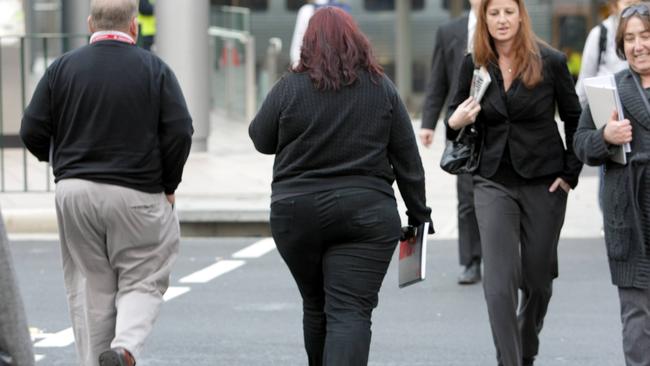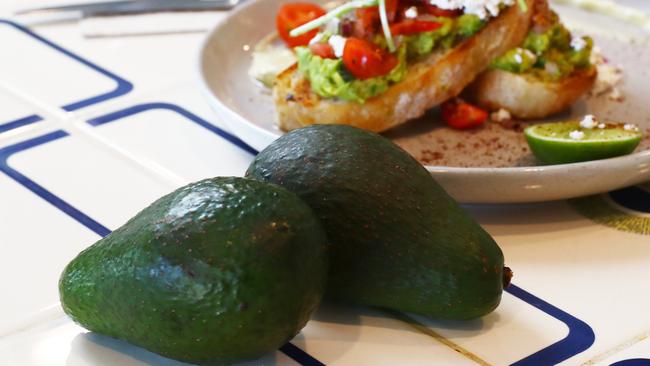Squats, yoga, pistachios: how to avoid becoming fat and frail
Scientists warn that people who put on weight in middle age are more likely to develop problems in later life. Here’s how to banish midlife spread.

AS scientists do not tire of telling us, a paunch or muffin top is never good news for our health. Accumulating fat around the middle is already known to raise the risk of metabolic syndrome, the term for a cluster of risk factors including insulin resistance and raised blood pressure and cholesterol levels that puts you at risk of heart disease and diabetes. And now a team from the University of Oslo warns that people with middle-age spread are more likely to be “fat and frail” in retirement.
For the study in the journal BMJ Open, the researchers analysed data from 45,000 Norwegians over two decades and found that those who were obese at the start and didn’t lose weight, and those who gained weight around the middle during the course of the study, were more likely to be frail and find that “pretty much everything was a struggle” when questioned about exhaustion.
Of course, diet and the cruel hand of genetics play a key role in the development of the dreaded middle-age spread. And there is a pressing need to gain control of our expanding waistlines. This week British researchers reported that having type 2 diabetes makes death from cancers more than twice as likely. The study used the UK general practice database to access information on more than 135,000 Britons aged 35 and over who were diagnosed with type 2 diabetes between 1998 and 2018. They warned that deaths could spiral unless more was done to tackle the obesity epidemic.
Hormones also influence where both men and women deposit body fat, particularly from midlife onwards. Dr Duane Mellor, a dietitian and senior lecturer at Aston University medical school, says that “the most common place to first gain weight from middle age is around the waistline” but that belly fat is not an inevitable part of ageing. With concerted effort you can avoid or reduce it. Here’s how:
WOMEN
In middle-aged women the notorious meno-belly, or muffin top, is usually a result of the body’s attempts to rebalance fluctuating oestrogen and stress hormones. “There are often noticeable changes in fat storage for women, from the hips to the middle, after the age of 40,” Mellor says. “Declining levels of oestrogen as they approach the menopause means that women tend to move towards a more android [central] pattern of weight gain in the stomach area.”

Blast your belly with body weight squats and lunges
Fat accumulates around the middle in response to the female body trying to retain oestrogen. While some cardio is an essential addition for reducing body fat, Dalton Wong, founder of Twenty Two Training, says high-intensity body weight squats and lunges are essential. The largest and most powerful muscles – the gluteal muscles in the buttocks, the quadriceps and hamstrings in the legs – are located in the lower body, and the harder you work them the greater the fat-blasting effect. “Squats and lunges are superb for burning fat all over,” Wong says. “Start with 30 seconds of squats a day, adding weights if you want to as you get stronger.”
Do yoga twice a week
Stress hormones such as cortisol affect fat distribution by causing fat to be stored centrally around the midriff and organs. Yale University researchers showed that otherwise slim women with high stress hormone levels were more likely to have excess visible belly fat. It follows that taking up relaxing yoga will help to lower your stress hormones and slim your waistline at the same time. When 60 women with abdominal obesity were prescribed two weekly 90-minute classes of traditional hatha yoga, they had “positive” changes in belly fat after 12 weeks.

Exercise before breakfast
The time that you exercise could make a difference, with findings from a study by Paul Arciero, professor of health and human physiological sciences at Skidmore College, New York, revealing that the fat-burning benefits of physical activity vary for men and women according to the time of day they work out. For women, hitting the gym for an hour between 6.30am and 8.30am, and before breakfast, brought greater rewards in terms of belly fat blasted compared with those who exercised between 6pm and 8pm. In his 12-week trial Arciero found that all female participants reduced total body fat, belly and hip fat, but these improvements were greater in women exercising in the morning. “We showed for the first time that for women, exercise during the morning reduces belly fat and blood pressure,” he says.
Eat an avocado a day
Women who add an avocado to their daily diet could experience a reduction in dangerous visceral fat around their organs and a positive change in the way total belly fat was distributed on their bodies, nutritionists at the University of Illinois reported. For the study in the Journal of Nutrition, Naiman Khan, professor of kinesiology and community health, and author of the paper, recruited 105 men and women, half of whom added an avocado to their diet and half of whom ate an otherwise identical diet minus the avocado for 12 weeks. “What we learnt was that an avocado every day impacted the way individuals store body fat in a beneficial manner for their health, but the benefits were primarily in females,” Khan said. “Learning that the benefits were only evident in females tells us a little bit about the potential for sex playing a role in dietary intervention responses.”

Establish a regular sleep pattern
Disrupted sleep patterns are more common among women than men, particularly around the menopause. A recent YouGov survey revealed that women aged 25-59 are “substantially more likely than other age groups to say they don’t get enough sleep” with 58-60 per cent struggling to drop off or sleep soundly. “Scientists have shown that too little sleep can disrupt our hunger and satiety mechanisms, leading to increased appetite and snacking during the day,” says the nutritionist Dominique Ludwig. “We all know that if we feel tired we want the quick fixes that are usually rich in sugars or refined carbohydrates and they are bad news for the waistline.”
In 2022 Naima Covassin, a cardiovascular medicine researcher at the Mayo Clinic, showed that restricting sleep over 21 days in a group of participants resulted in them consuming more than 300 extra calories – and 17 per cent more fat – a day than when the same people were not sleep-deprived. Their lack of sleep led to a 9 per cent increase in total belly fat and an 11 per cent increase in harmful abdominal visceral fat, and catching up with recovery sleep and naps did not reverse these gains, at least in the short term. “Establishing a good sleep routine with regular bedtimes and not eating for at least two to three hours before bed are excellent strategies for fighting belly fat,” Ludwig says.
MEN
In men the appearance of a paunch is down to poor diet and a lack of exercise but also to declining testosterone levels and rising levels of stress hormones such as cortisol, which work together to deposit body fat around the middle. “Levels of testosterone start to fall by about 1 per cent annually from the age of 30,” says Ian Marber, the nutrition therapist and author of Man Food. “And as these levels fall, so fat storage accumulated around the abdominal region increases, giving rise to a paunch.”

Add cardio and lift more weights
Wong says that the primary goal of men wanting to get rid of their belly fat should be to increase their cardio – running, cycling, swimming or power walking – to an hour most days. “It doesn’t have to be flat out,” he says. “Just get it in to help reduce overall fat.” Once that is part of your routine, start adding weights. In a 12-year study by Harvard scientists, middle-aged men who did up to 20 minutes of resistance training a day had less belly fat than those who just ran or swam. “By working against a resistance with weights, you force your body to burn more calories that will get rid of belly fat,” he says. “Include dead lifts and squats because they use the larger muscle groups and therefore are good calorie burners.”
Cut down on sugar
According to the British Nutrition Foundation, average intakes of “free sugars” – that’s any type of sugar added to food, including honey, molasses and maple syrup – are almost twice the upper recommended amount of 30g a day, with men aged 19-64 typically consuming the most at 55.5g a day (average intake for women is 44g a day). Researchers at the University of Minnesota who examined the effects of sugar intake in 3,070 participants found that high intakes result in larger fat deposits around the belly. “When we consume too much sugar the excess is converted to fat and stored,” says So Yun Yi, author of a 2020 paper in the European Journal of Preventive Cardiology. “This fat tissue located around the heart and in the abdomen releases chemicals into the body which can be harmful to health.”
The nutritionist Rhiannon Lambert says our target should be to reduce intake of these free sugars. “UK government recommendations are that we should eat no more than 90g of total sugars per day – that includes those in fruit and dairy – and no more than 30g of that amount, or seven teaspoons, should come from free sugars. Nearly one quarter of our intake of free sugars is from sugary drinks, but look out for maple syrup added to an oat bar or avoid adding that spoon of honey to your tea.”

Eat a handful of pistachios a day
Pistachios are low in calories (there are about 155 calories per 25g) but high in nutrients including health-boosting antioxidants such as lutein and zeaxanthin, which are essential for eye health, and phenolic compounds that are important for blood sugar control. But there are other benefits to antioxidant-rich pistachios. They were shown to reduce the male body’s response to everyday stresses in a ten-year study by Pennsylvania State University. Plus, their high fibre content means they are great for gut health and for blasting belly fat. In 2020 a team of doctors from the University of California showed that a daily serving of 30-40g of pistachios helped to reduce waist circumference in overweight adults compared with a control group who did not eat the nuts every day.
Drink less beer
According to the charity Drinkaware 30 per cent of men in England report drinking more than the recommended upper limit of 14 units of alcohol per week; for women the figure is 15 per cent. All alcohol should be reduced to healthy limits, but making an effort to drink less beer is good for your belly fat. Research involving 1,869 participants in the UK Biobank revealed that beer and spirits were associated with elevated levels of harmful belly fat while others have shown that drinking six or more beers a week increases waist-to-hip ratio. “Remember that alcohol is a carbohydrate with around seven calories per gram,” Ludwig says. “A pint of beer contains about 215 calories, as many as are in a chocolate bar, and we should always consider it as extra food in our diets.”
The Times



To join the conversation, please log in. Don't have an account? Register
Join the conversation, you are commenting as Logout